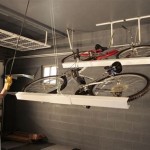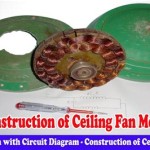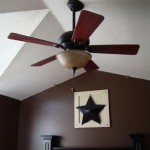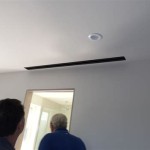Drywalling Over a Popcorn Ceiling: A Comprehensive Guide
Popcorn ceilings, also known as acoustic ceilings, were widely used from the 1950s through the 1980s for their sound-dampening qualities and ability to hide imperfections in the ceiling surface. However, tastes have changed, and these textured ceilings are now often considered outdated and undesirable. While removal is one option, it can be messy, time-consuming, and potentially hazardous if the ceiling contains asbestos. Drywalling over a popcorn ceiling offers an alternative approach, providing a smooth, modern surface without the need for scraping and potential asbestos disturbance. This article will provide a comprehensive guide to the process, highlighting key considerations and best practices.
Before embarking on this project, it's crucial to understand the potential benefits and drawbacks of drywalling over a popcorn ceiling. A primary advantage is avoiding the messy removal process, which can generate significant dust and require specialized equipment and safety precautions, especially if asbestos is present. Drywalling also avoids the potential for damage to the existing ceiling substrate during scraping, which could necessitate further repairs. Furthermore, the added layer of drywall can enhance soundproofing and insulation properties of the ceiling.
However, there are also potential downsides. Drywalling will lower the ceiling height by at least half an inch, depending on the thickness of the drywall being used. In rooms with already low ceilings, this reduction can be noticeable. The added weight of the drywall can also be a concern, particularly if the existing ceiling structure is weak or compromised. It is imperative to thoroughly assess the ceiling's structural integrity before proceeding. Proper preparation and careful installation are crucial to ensure a successful and long-lasting result. A professional assessment might be warranted to analyze existing structural load capacity.
Assessing the Existing Popcorn Ceiling
The first and arguably most critical step is a thorough assessment of the existing popcorn ceiling. This evaluation should cover several key areas to determine the feasibility and safety of drywalling over it.
Asbestos Testing: The most important consideration is the potential presence of asbestos. Popcorn ceilings installed before the late 1970s often contain asbestos, a known carcinogen. Disturbance of asbestos-containing materials can release fibers into the air, posing a serious health risk. It is imperative to have the ceiling professionally tested for asbestos before commencing any work. Asbestos testing involves collecting a sample of the popcorn texture and sending it to a certified laboratory for analysis. If asbestos is detected, removal must be handled by a licensed asbestos abatement contractor. Drywalling over an asbestos-containing popcorn ceiling is permissible according to many regulations, as it encapsulates the asbestos and prevents fiber release, but local and regional building codes should be consulted to ensure compliance.
Structural Integrity: The existing ceiling must be structurally sound enough to support the added weight of the drywall. Inspect the ceiling for signs of sagging, water damage, cracks, or loose areas. If any of these issues are present, they must be addressed before proceeding. Water damage can weaken the ceiling and compromise its ability to hold the additional weight. Cracks may indicate underlying structural problems. Loose areas suggest that the existing ceiling is not securely attached to the framing members. Reinforcing the ceiling with additional screws or furring strips may be necessary to provide adequate support.
Texture Adhesion: Evaluate the adhesion of the popcorn texture to the existing ceiling. If the texture is peeling, flaking, or easily removed, it may not provide a stable base for the drywall. Loose texture can compromise the bond between the drywall and the ceiling, leading to potential sagging or delamination. In such cases, it may be necessary to scrape off any loose or poorly adhered texture before installing the drywall. However, if asbestos is present, this should only be done by a qualified abatement professional.
Levelness: Check the levelness of the ceiling. Significant variations in levelness can make it difficult to achieve a smooth, even surface with the new drywall. Minor imperfections can be compensated for with joint compound during the finishing process, but larger discrepancies may require additional framing or furring to create a level substrate. Using a long level or a laser level can help identify any areas that need attention.
Preparing the Surface
Proper preparation of the existing popcorn ceiling is crucial for a successful drywall installation. This involves cleaning the surface, addressing any loose or damaged areas, and applying a bonding agent.
Cleaning: Thoroughly clean the ceiling to remove any dust, dirt, or debris. A vacuum cleaner with a brush attachment is ideal for this purpose. Pay particular attention to corners and edges where dust tends to accumulate. Cleaning the surface ensures that the bonding agent will adhere properly and create a strong bond between the popcorn texture and the drywall.
Repairing Damage: Repair any cracks, holes, or loose areas in the existing ceiling. Use joint compound to fill small cracks and holes. For larger damaged areas, it may be necessary to patch the ceiling with drywall or plaster. Ensure that the patches are flush with the surrounding surface to avoid creating bumps or unevenness in the finished drywall.
Applying Bonding Agent: Apply a high-quality bonding agent specifically designed for use over textured surfaces. A bonding agent helps to improve the adhesion between the popcorn texture and the drywall compound. Follow the manufacturer's instructions for application. Typically, the bonding agent is applied with a roller or brush and allowed to dry completely before proceeding with the drywall installation. Some bonding agents may require multiple coats for optimal results.
Optional Skim Coating: While not always necessary, applying a thin skim coat of joint compound over the popcorn texture can provide a smoother, more uniform surface for the drywall. This is particularly beneficial if the popcorn texture is very pronounced or uneven. A skim coat helps to fill in the gaps and irregularities in the texture, creating a flatter surface that is easier to work with. However, applying a skim coat adds an extra step to the process and may not be necessary if the popcorn texture is relatively smooth and well-adhered.
Installing the Drywall Over Popcorn Ceiling
The drywall installation process involves attaching the drywall sheets to the existing ceiling using screws. Careful planning and precise execution are essential for achieving a professional-looking result.
Planning the Layout: Before starting the installation, carefully plan the layout of the drywall sheets. Measure the ceiling and determine the most efficient way to cover the surface with the available drywall. Minimize the number of seams and avoid placing seams in areas that are prone to stress or movement. Consider the location of light fixtures and other ceiling-mounted items. Cut the drywall sheets to size using a utility knife or drywall saw. It is often helpful to create a cutting diagram and mark the drywall sheets with the required dimensions prior to cutting.
Attaching the Drywall: Attach the drywall sheets to the existing ceiling using drywall screws. Use screws that are long enough to penetrate through the drywall and into the framing members behind the ceiling. Space the screws evenly, typically about 12 inches apart. Start at one corner of the room and work your way across the ceiling, ensuring that each drywall sheet is securely attached. Use a drywall screw gun to drive the screws to the proper depth without damaging the drywall paper. Avoid over-tightening the screws, as this can strip the screw holes and weaken the bond between the drywall and the framing members.
Dealing with Seams: Properly treating the drywall seams is crucial for creating a smooth, seamless surface. Apply drywall tape to the seams using joint compound. Embed the tape in the compound and feather the edges to create a smooth transition. Apply multiple coats of joint compound, allowing each coat to dry completely before applying the next. Sand the joint compound smooth after each coat to remove any imperfections. Pay particular attention to corners and edges, ensuring that they are properly taped and finished. A variety of drywall taping techniques can be used, depending on the type of seam and the desired level of finish.
Finishing the Surface: Once the seams are properly taped and finished, apply a final coat of joint compound to the entire ceiling to create a smooth, uniform surface. Sand the entire ceiling smooth using fine-grit sandpaper. Remove any dust or debris before painting. Prime the drywall with a high-quality primer to seal the surface and improve paint adhesion. Apply two coats of paint, allowing each coat to dry completely before applying the next. Choose a paint color and finish that complements the room's decor. Matte or eggshell finishes are often preferred for ceilings as they tend to hide imperfections better than glossier finishes.
Addressing Potential Issues: Throughout the process, be prepared to address potential issues that may arise. If the drywall starts to sag or pull away from the ceiling, reinforce the area with additional screws. If the joint compound cracks or shrinks, reapply and sand as needed. If the paint peels or blisters, scrape off the loose paint and reprime before painting. Proper preparation and attention to detail can help minimize the risk of these issues occurring.
In summary, while drywalling over a popcorn ceiling can be a viable alternative to removal, a thorough assessment of the existing ceiling, proper preparation, and careful installation are crucial for a successful outcome. Ignoring these steps can lead to structural problems, poor adhesion, and an aesthetically unappealing result.

How To Cover Popcorn Ceiling With Drywall Diy Family Handyman

How To Cover Popcorn Ceiling With Drywall Diy Family Handyman

How To Cover Popcorn Ceilings Trusscore

Second Layer Of Drywall On Textured Ceiling Do I Need To Sand Down Or Remove The Texture Before Goes Home Improvement Stack Exchange

How To Cover Popcorn Ceiling Without Removing It Dallas Paints

How To Cover Popcorn Ceilings With Beadboard Step By Guide Shoe Makes New

How To Cover Popcorn Ceiling Without Removing It Dallas Paints

4 Diy Methods To Remove Popcorn Ceilings Erin Zubot Design

How To Mix Skim Coat Mud Tools Over Popcorn Ceiling

How To Cover A Popcorn Ceiling Also Has Basketball Hole With Wood Hometalk
Related Posts








